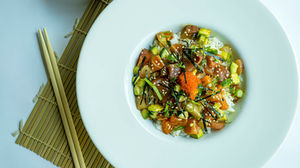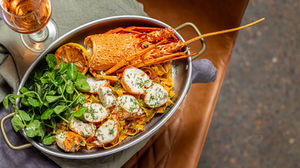Stop and Smell the Rose!
- Your Hunter Valley Magazine
- Sep 15, 2020
- 2 min read

The origins of Rosé winemaking can be traced back to ancient Greece when much of the red wine produced was pale red. By mid-100 B.C, the Romans had popularized darker red wines in Europe, but Rosé wine remained popular in parts of France – most notably, Provincia Romana, which is today’s Provence region, as well as the surrounding Mediterranean area.
Historically, Rosé wine practically disappeared in the nineteenth century and the first half of the 20th century. Red wine was reserved for peasants and workers, while Rosé became the fashionable wine of choice for the middle class in the 1960’s.
Today, there is a new surge in the popularity, and the number of Rosés on the market continues to grow, seemingly unabated.
In fact, the demand for traditional dry Rosé is so widespread that across France, Rosé outsells white wine and outside of France, it is experiencing a rebirth.
Rosé wines can be made from almost any red variety, red blends or red and white blends, and can be made in a sweet, off-dry or bone-dry style, with most European Rosés being decidedly dry.
Almost all of the world’s wine-producing regions make Rosés. The first, and arguably, the most important Rosé producer is France, where it is predominantly found in the southern region of Tavel, Provence; and the Loire Valley in Anjou. Other important regions are Piedmont in Italy, Rioja in Spain and Styria in Austria.
For this wine, colour is essential – it’s a major aspect of its appeal. It is impossible to define the “correct” colour of Rosé wine, which can range from pale pink to light red. The vast range of colours depends on the grape used, the richness of the grape’s phenolic compounds and the winemaking techniques used, which include the length of time the grape skins have been in contact with the grape juice.
Australia’s fresh and vibrant Rosés are generally produced from red grape varieties such as Shiraz and Grenache, with only minimal contact on skins to give the wines their signature ‘blush’.
As a fantastic food wine, the versatility of Rosé is its standout feature as it can be paired with a wide variety of foods and flavours and handles spices and heat very well. Rosé is great alongside salads, antipasto platters, fish dishes or even your favourite curry.
When pairing with cheese, Rosé is the perfect accompaniment to soft goat cheese.
Rosé usually has a delicate flavour and a balance of sweetness and acidity that make it a refreshing palate-cleansing drink. Best served young and at a chilled temperature, Rosé wine is a wonderful alternative to a red or white, and can be a refreshing accompaniment to a variety of meals – as it tops the charts for food-friendly versatility.
Find our Hunter Valley TOP PICKS here!











































































































